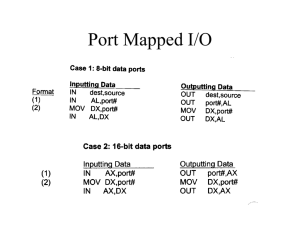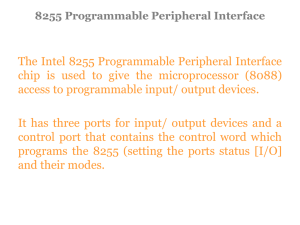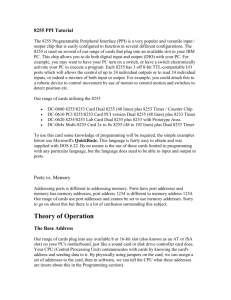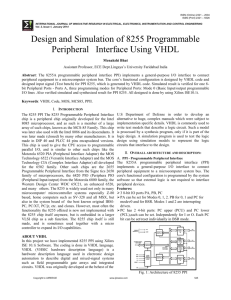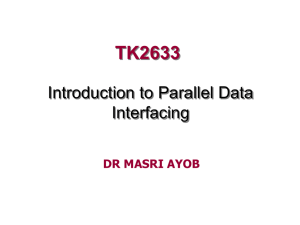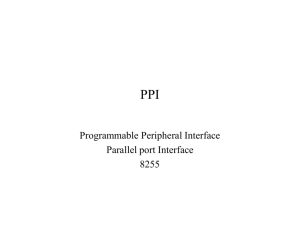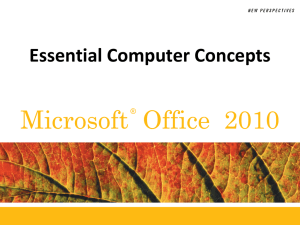8255-mp2_B Section
advertisement
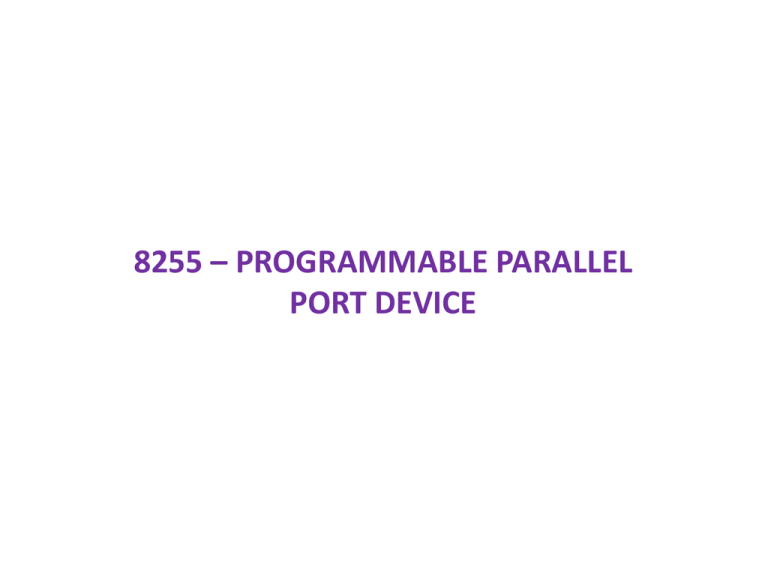
8255 – PROGRAMMABLE PARALLEL PORT DEVICE Intel 8255 PPI(PROGRAMMABLE PARALLEL PORTS • I/O port chip used for interfacing I/O devices with microprocessor. • Very commonly used peripheral chip which is available on 8086 motherboard. • Acts an interface between the peripheral device and the 8086. • Has 3 i/o ports namely port A,port B,port C to transfer parallel data,each of 8 bit. • Port C is used as 2 4-bit ports(independent halves) or to produce handshake signals for A and B. • I/O signals classified into 2 groups • Group A: PA7-PA0 and PC4-PC7 • Group B : PB7-PB0 and PC0-PC3 METHODS OF PARALLEL DATA TRANSFER • • • • SIMPLE INPUT AND OUTPUT SIMPLE STROBE I/O SINGLE-HANDSHAKE I/O DOUBLE HANDSHAKE I/O Methods of Passing Parallel Data Simple input and output • The crossed on the waveform represent the time at which a new data byte becomes valid on the output lines on the port. Simple strobe • valid data will be present on an external device only at certain time,so it must be read at that time. • Ex:When a key is pressed,circuit in keyboard sends out corresponding ASCII code on 8 parallel data lines and sends a strobe signal on another line to indicate valid data is present on data lines. • For high speed data transfer,the sender will send data bytes faster than receiving system could read them. • Hence handshake scheme is used. Single Handshake I/O(Strobed I/O) • Peripheral device outputs some parallel data and send STB’ signal to MP. • MP detects STB’ signal and sends ACK to peripheral to indicate data has been read and peripheral can sent next byte of data. • Handshaking ensures that peripheral device does not send data until receiving system indicates with an ACK that it is ready to receive next byte. Double Handshake I/O • The sender asserts STB’(low) and the receiver raises its ACK. • The external device then send data byte and raises its STB’ and receiver reads the data and drop ACK. HANDSHAKE INPUT DATA TRANSFER SIGNAL DIRECTIONS MICROPROCESSOR PORT DEVICE PERIPHERAL PARALLEL DATA LINES STB ACK Need of 8255 • The parallel port device 8255 has been designed to automatically manage the handshake operation. • Eg, it can be programmed to automatically receive an Strobe signal from a peripheral, send an int signal to the processor and send the ACK signal back to the peripheral at proper times 8255 – Internal block diagram Note: 8255 is often used in mode 1

